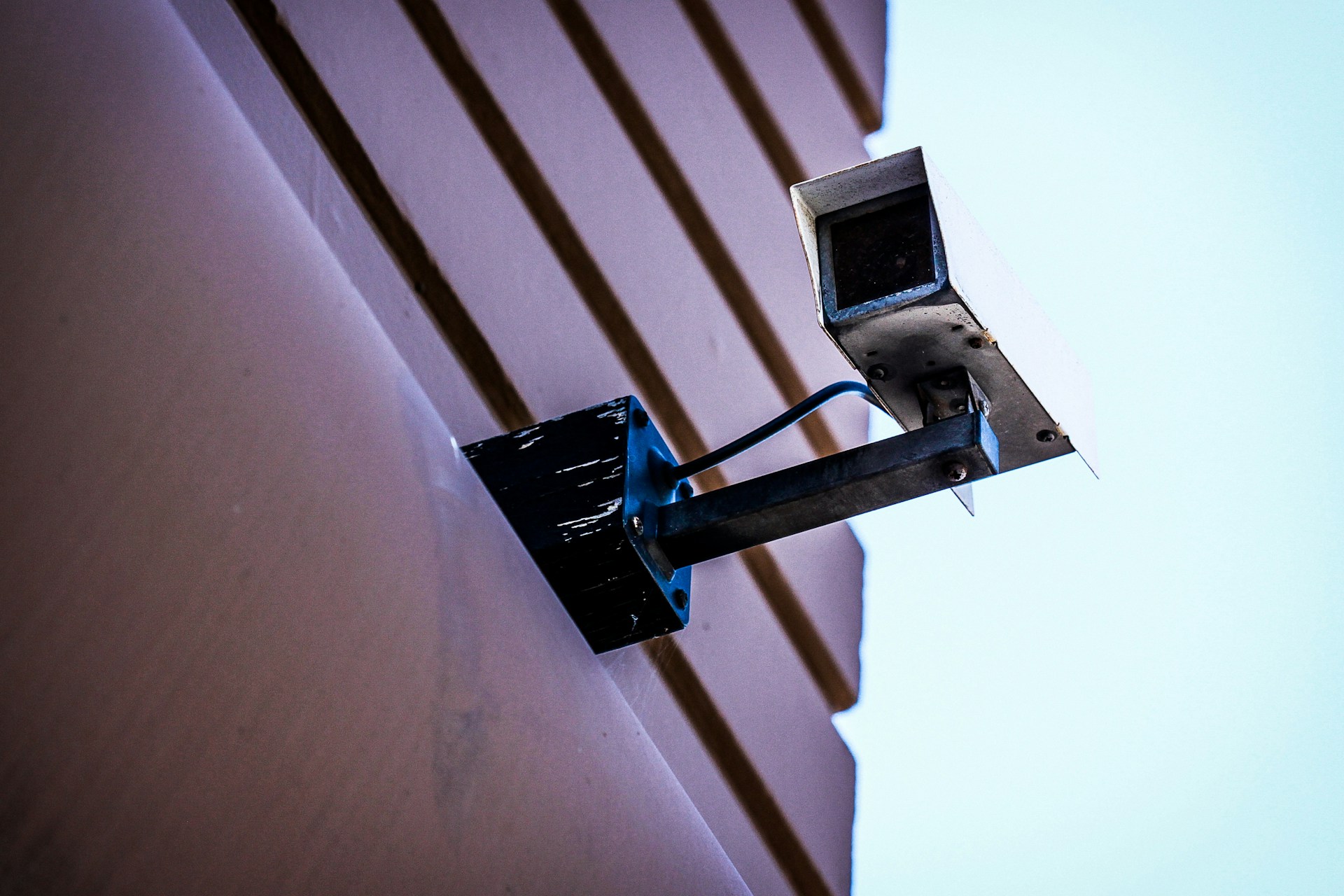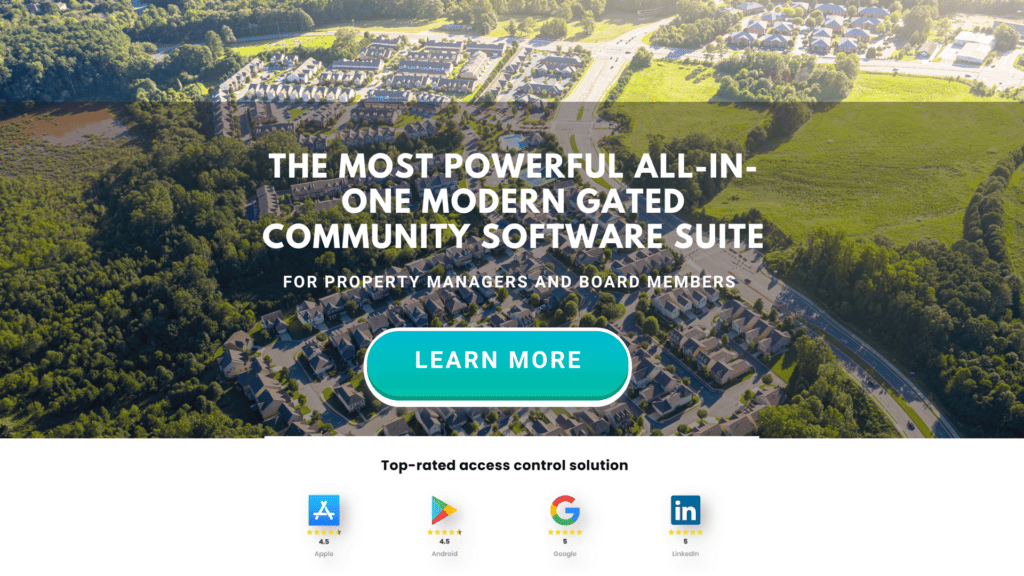Maintaining secure environments in residential communities is a huge responsibility that falls on the shoulders of Homeowners Associations (HOAs). Whether managing gated communities, condo high-rises, or multi-family properties, HOAs face various security challenges that demand comprehensive and proactive strategies.
This article explores the most pressing security concerns for HOAs and provides actionable solutions to address them effectively.
IN THIS ARTICLE
- Understanding the Importance of Security in HOA Communities
- Common Security Concerns for HOAs
- Conclusion
Understanding the Importance of Security in HOA Communities
Ensuring security is essential for the well-being of residents, protecting property values, and maintaining the community’s reputation.
With advancing technology and evolving criminal tactics, HOAs must continually adapt their strategies to protect their communities. Implementing the latest security solutions and fostering a culture of safety is critical for the success of any HOA.
Common Security Concerns for HOAs
Below, we explore the most common security issues HOAs encounter and provide effective strategies for addressing each one, helping create safer and more welcoming communities for all residents.
1. Unauthorized Access
One of the most significant threats for HOAs is preventing unauthorized access to residential areas. Gated entry points, parking garages, and building entrances must be managed efficiently to avoid breaches of security that could lead to theft, vandalism, or privacy violations.
Here are some ways to address unauthorized access issues:
Modern Access Control Systems
By adopting advanced access control systems, such as mobile credentials, key fobs, and biometric scanners, HOAs can ensure that only authorized residents, guests, and personnel gain entry.
Visitor Management Software
Guests, delivery drivers, and other vendors all need to be tracked as they enter and exit the community. Visitor management platforms like Proptia can record when a non-resident passes through the gates or even issue time-sensitive credentials that only work during certain times of the day.
2. Vehicle and Parking Lot Security
Parking areas are often hotspots for theft and vandalism. Managing these spaces effectively can be challenging, especially in larger communities with high traffic volumes. Additionally, unauthorized vehicles can occupy resident spaces or restricted areas, creating conflicts and reducing available parking.
These issues can escalate without proper monitoring and security measures, leading to resident dissatisfaction and increased liability for the HOA. Here’s how to deal with them:
Comprehensive Surveillance Systems
Invest in high-definition cameras with night vision and motion detection to monitor parking areas. This proactive approach deters crime and provides critical evidence if incidents occur.
License Plate Recognition (LPR)
Integrating LPR technology into gated communities helps monitor and control vehicle access. It not only verifies authorized vehicles but also keeps a log of all incoming and outgoing cars, enhancing accountability and security.
Parking Permit Verification
Using software that automatically verifies parking permits can reduce unauthorized parking and keep common spaces organized. Automated systems allow for efficient monitoring of parking spaces, reducing conflicts and maintaining harmony within the community.
3. Package Theft
The rise in online shopping has led to increased incidents of package theft in residential communities. Packages left unattended in common areas or doorsteps are easy targets for thieves, creating frustration for residents and damaging the community’s sense of safety.
With deliveries becoming more frequent, particularly during peak shopping seasons, the risk of theft escalates if secure solutions are not in place. Package theft not only impacts residents financially but can also lead to trust issues within the community, as residents become concerned about their belongings being vulnerable.
It’s crucial for HOAs to implement effective strategies to manage and secure package deliveries, ensuring that residents feel their homes are truly safe and their possessions protected. Here are some ways to keep packages safe:
Secure Package Lockers
Install secure lockers where delivery personnel can safely deposit packages. Residents are notified via text or email and receive a unique access code to retrieve their items.
For larger communities, dedicating a secure package room with monitored access can further minimize the risk of theft.
Video Surveillance and Integration
Set up video cameras at package delivery points and integrate them with existing access control systems. This not only monitors deliveries but also records any suspicious activities, providing valuable evidence when needed.
4. Lack of Emergency Preparedness
Emergencies like natural disasters, fires, or criminal incidents can occur unexpectedly, making emergency preparedness a crucial concern for HOAs. Without a clear plan, the safety of residents may be compromised.
Here’s how to build a strong emergency response to keep your property and residents are safe:
Developing Comprehensive Response Plans
HOAs should create and regularly update emergency response plans. These should cover natural disasters, fire protocols, and security breaches, ensuring all residents know the procedures.
Integrating Access Control with Emergency Services
Systems like Proptia’s allow emergency responders quick access during crises, enhancing response times and minimizing potential damage. This seamless integration can save lives when seconds matter.
Emergency Communication Systems
Implement an emergency communication system that sends instant alerts via text or email to residents during critical incidents. Effective communication is vital for keeping everyone informed and safe during emergencies.
5. Inadequate Surveillance Coverage
Surveillance cameras are essential for monitoring community spaces, but inadequate coverage can result in blind spots and limit the effectiveness of security efforts.
Ensuring that surveillance systems are strategically positioned and up-to-date is vital for maximizing their effectiveness and maintaining a secure, well-monitored environment. However, legal considerations must also be taken into account when installing security systems.
Here are some tips on addressing surveillance coverage and any gaps you might have:
Smart Surveillance Systems
Upgrade to AI-powered surveillance that detects unusual behavior and alerts security personnel in real-time. Proptia’s integrated platforms offer real-time monitoring and automated notifications, allowing for proactive responses.
Comprehensive Security Assessments
Conduct a full security audit to identify and eliminate blind spots. By positioning cameras in strategic locations, HOAs can achieve comprehensive coverage, enhancing the property’s overall security.
Cloud-Based Video Storage
Use cloud-based storage solutions for surveillance footage to ensure that all video data is accessible, securely stored, and easily retrievable when needed.
6. Visitor and Vendor Management Challenges
Managing the large volume of visitors, vendors, and maintenance personnel in HOA communities can be a complex task. Traditional manual logging systems are often inefficient and prone to errors.
There are several modern solutions:
Digital Visitor Management Platforms
Digital platforms streamline the visitor check-in process and ensure that only pre-approved individuals gain entry. This improves efficiency and enhances security by keeping a digital log of all visitors.
Automated Vendor Credential Verification
Automated systems verify vendors and service personnel against a pre-approved database, ensuring that only authorized individuals access the community. This reduces the likelihood of unauthorized access and maintains a high level of security.
Pre-Scheduling and Resident Notification
Implement systems that allow residents to pre-schedule guest visits and receive notifications upon their arrival. This ensures that residents are aware of all visitors and can manage access conveniently and securely.
7. Cybersecurity Threats
With the increasing adoption of smart security systems in residential communities, cybersecurity threats become a growing concern. HOAs must secure their digital networks and data to prevent cyber-attacks that could compromise sensitive information or disable security systems.
That can be somewhat complex, so here are some tips:
Secure and Encrypted Networks
Ensure all access control and surveillance systems operate on encrypted networks with regular software updates. Implementing firewalls and VPNs helps secure data transmission, preventing unauthorized access.
Partnering with Cybersecurity Experts
Collaborate with cybersecurity specialists to perform regular security audits and address potential vulnerabilities. Proptia’s solutions offer ongoing support and expertise to maintain robust and resilient digital security infrastructures.
Resident Cyber Awareness Programs
Educate residents on the importance of cybersecurity. Awareness programs that teach residents how to secure their home networks and recognize phishing attempts can significantly reduce the risk of cyber-attacks.
8. Resident Safety and Crime Prevention
Maintaining resident safety goes beyond securing entrances and exits. HOAs need to implement comprehensive crime prevention strategies that foster a safe and welcoming community environment.
To make the entire community feel safe walking their dogs at night or letting their children play outside, follow some of these strategies.
Community Patrol Services
Incorporate on-site security patrols or partner with local law enforcement to maintain a visible security presence. Patrolling common areas like parks, pools, and playgrounds can deter criminal activity.
Resident Education Programs
Educate residents about best practices for personal safety and crime prevention. Hosting community events or distributing safety guides helps residents take proactive steps to protect themselves and their neighbors.
Lighting and Landscaping
Well-lit pathways and strategic landscaping design can reduce hiding spots, making it easier to identify suspicious behavior. HOAs should regularly maintain these areas to ensure they remain effective.
Conclusion
HOAs face a diverse array of security challenges, from unauthorized access and vehicle theft to cybersecurity threats. By adopting modern technology, such as advanced access control and surveillance systems, and proactively managing visitor and vendor access, HOAs can provide safer environments for their communities.
Solutions like Proptia’s integrated security systems offer the tools and expertise needed to stay ahead of these challenges, ensuring residents’ peace of mind and enhancing the community’s overall appeal.


